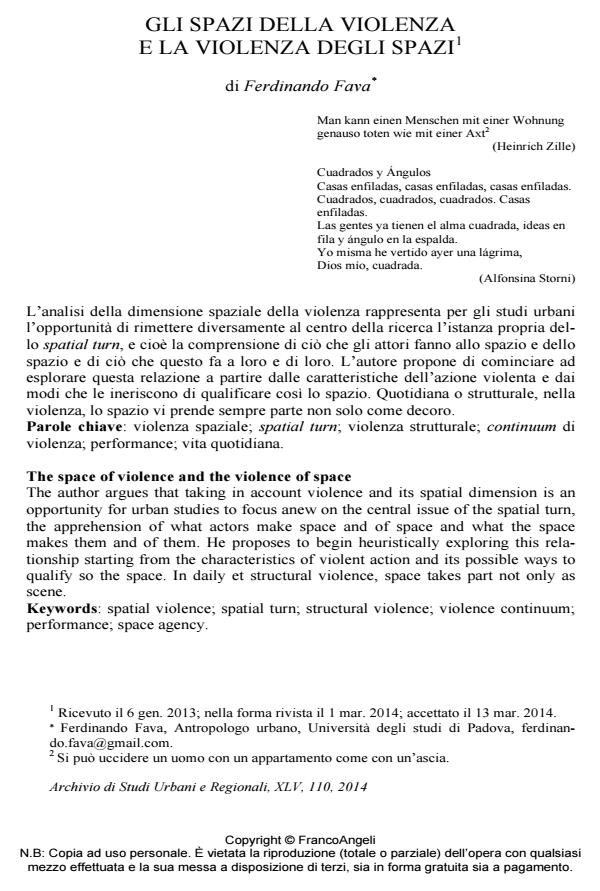Gli spazi della violenza e la violenza degli spazi
Titolo Rivista ARCHIVIO DI STUDI URBANI E REGIONALI
Autori/Curatori Ferdinando Fava
Anno di pubblicazione 2015 Fascicolo 2014/110
Lingua Italiano Numero pagine 15 P. 25-39 Dimensione file 63 KB
DOI 10.3280/ASUR2014-110003
Il DOI è il codice a barre della proprietà intellettuale: per saperne di più
clicca qui
Qui sotto puoi vedere in anteprima la prima pagina di questo articolo.
Se questo articolo ti interessa, lo puoi acquistare (e scaricare in formato pdf) seguendo le facili indicazioni per acquistare il download credit. Acquista Download Credits per scaricare questo Articolo in formato PDF

FrancoAngeli è membro della Publishers International Linking Association, Inc (PILA)associazione indipendente e non profit per facilitare (attraverso i servizi tecnologici implementati da CrossRef.org) l’accesso degli studiosi ai contenuti digitali nelle pubblicazioni professionali e scientifiche
The author argues that taking in account violence and its spatial dimension is an opportunity for urban studies to focus anew on the central issue of the spatial turn, the apprehension of what actors make space and of space and what the space makes them and of them. He proposes to begin heuristically exploring this relationship starting from the characteristics of violent action and its possible ways to qualify so the space. In daily et structural violence, space takes part not only as scene.
Parole chiave:Spatial violence; spatial turn; structural violence; violence continuum; performance; space agency
- When interlocutors die: Time and space of mobility through the biography of a homeless man Paolo Grassi, in Ethnography /2021 pp.534
DOI: 10.1177/1466138119891453
Ferdinando Fava, Gli spazi della violenza e la violenza degli spazi in "ARCHIVIO DI STUDI URBANI E REGIONALI" 110/2014, pp 25-39, DOI: 10.3280/ASUR2014-110003